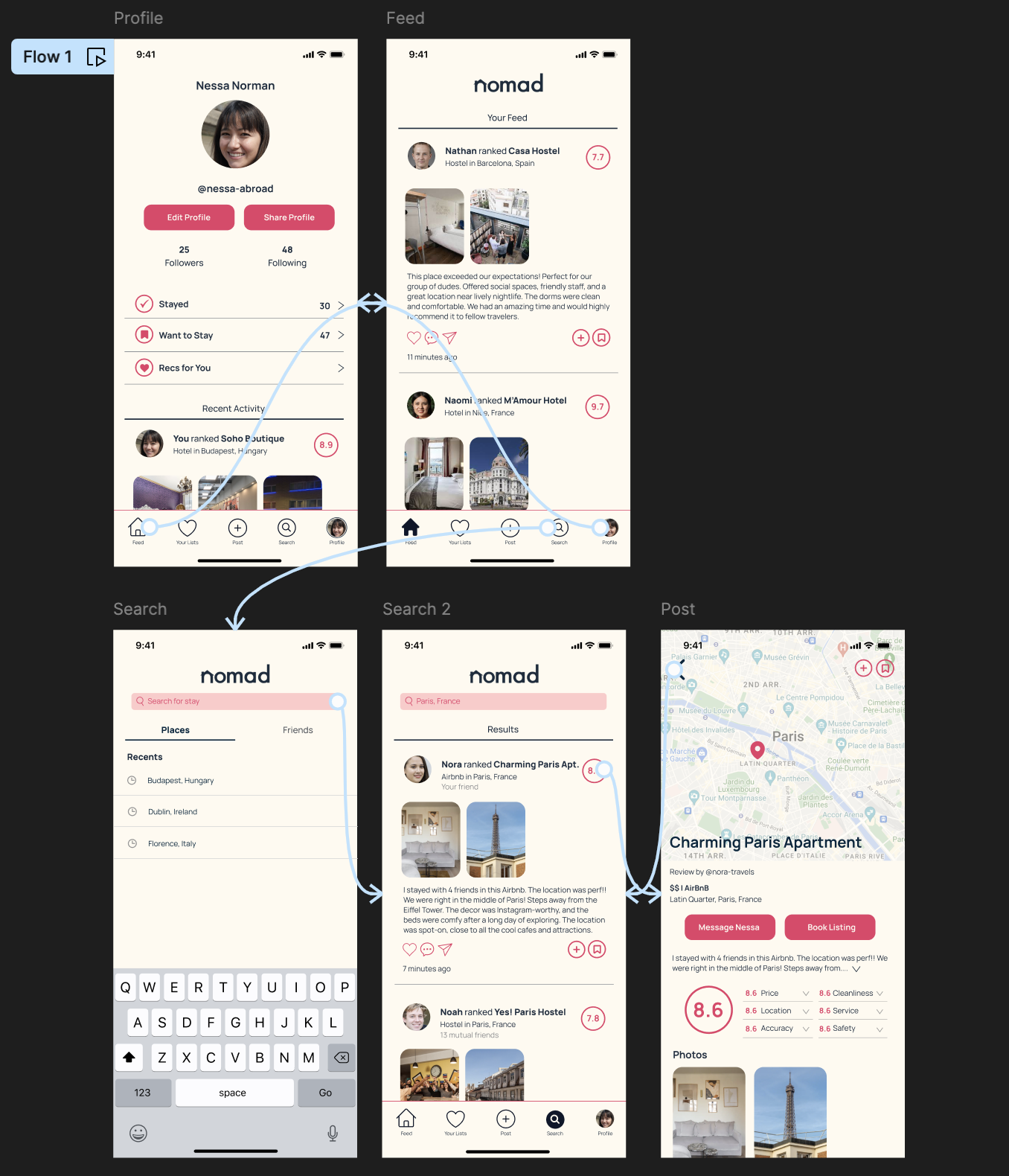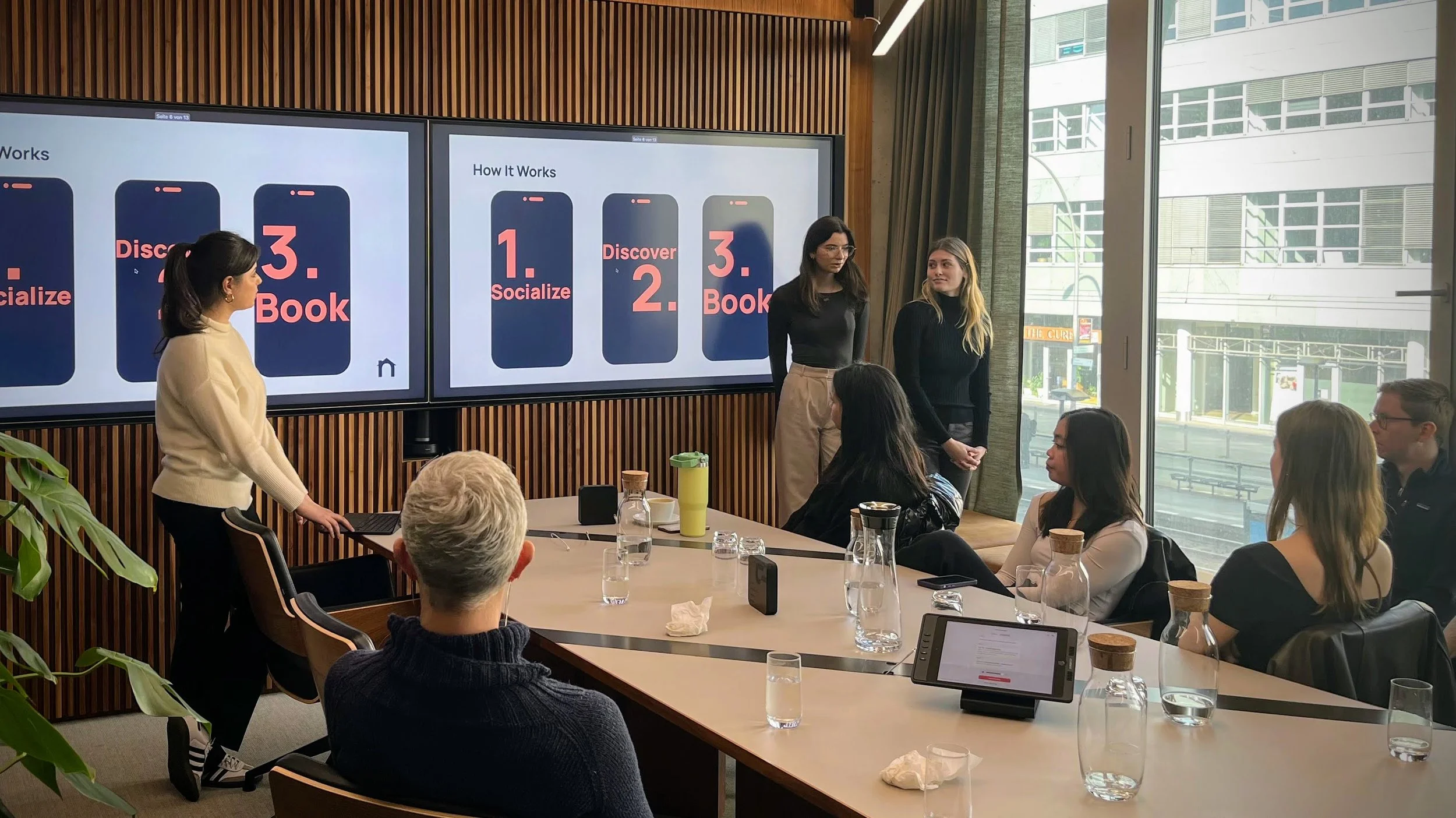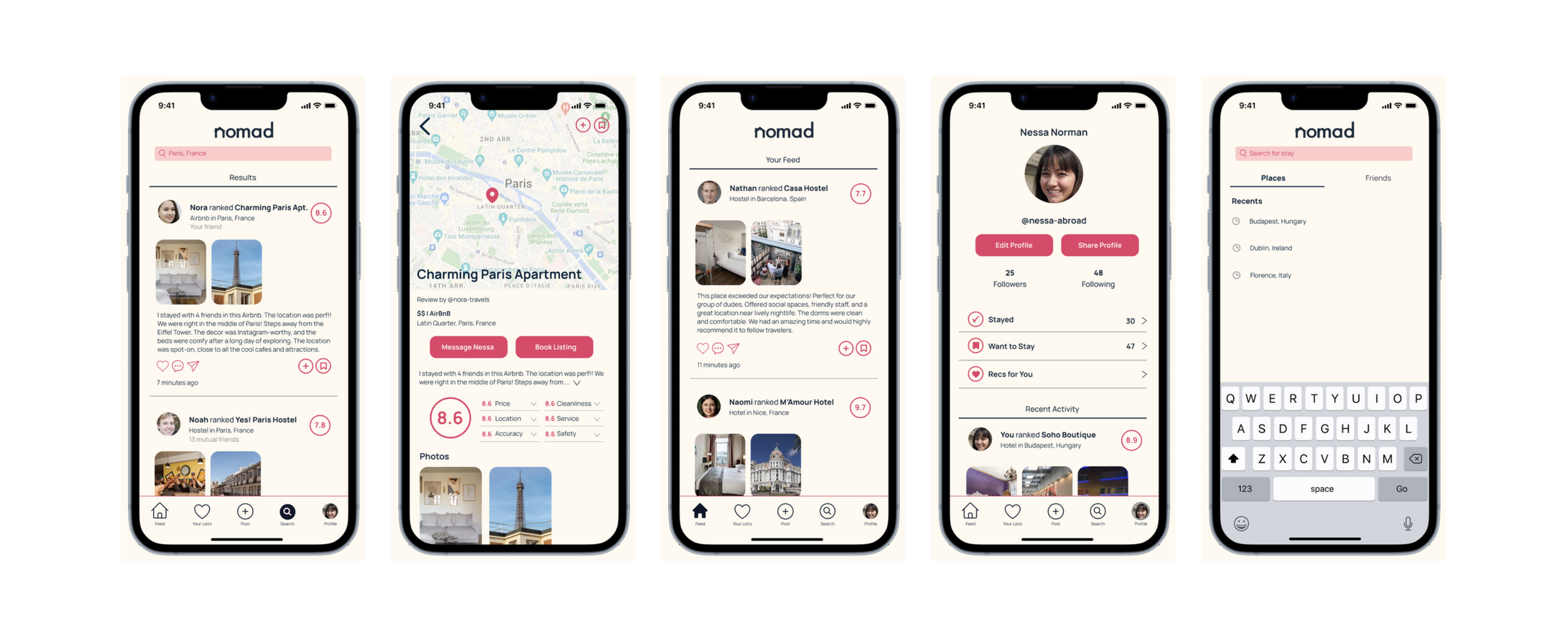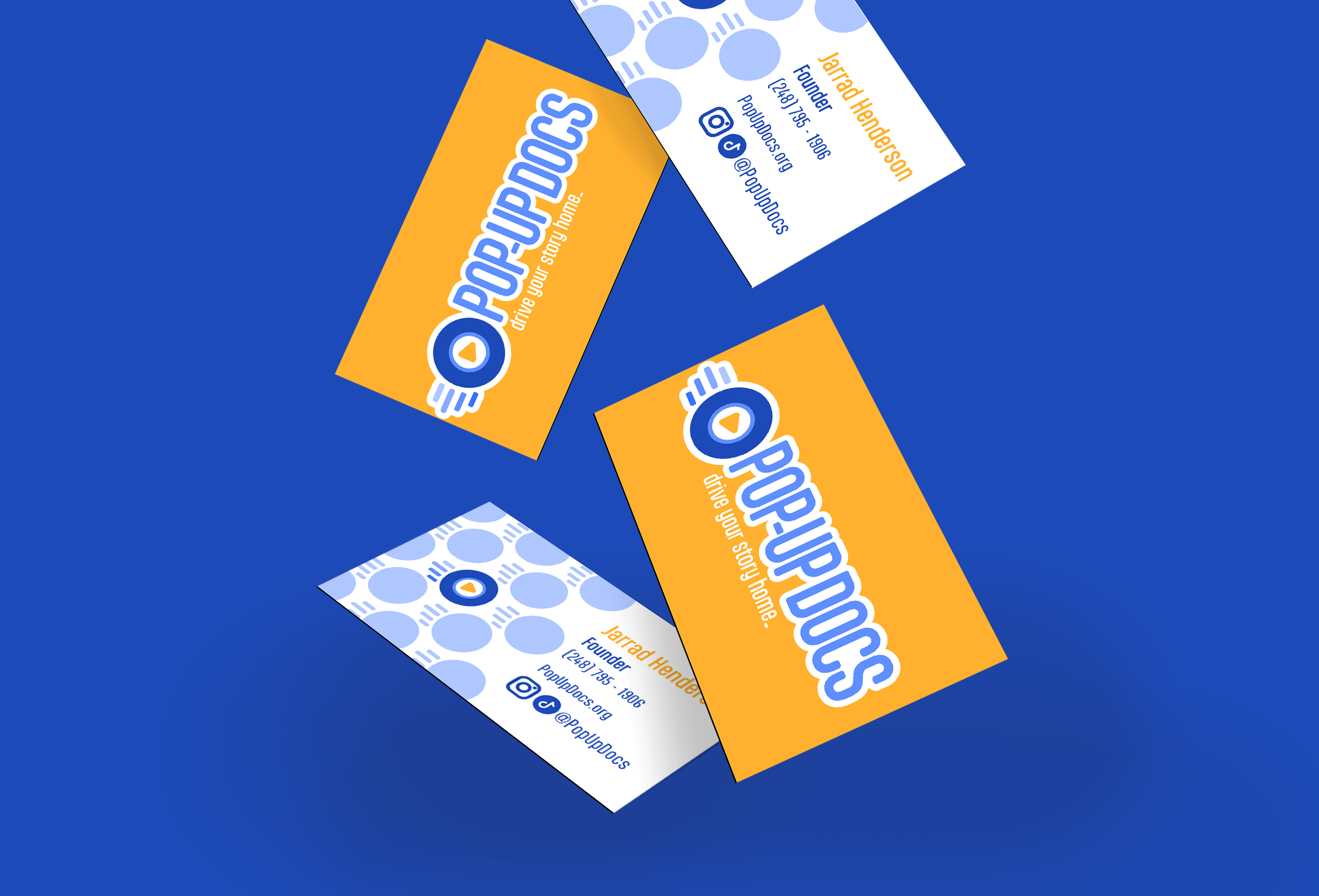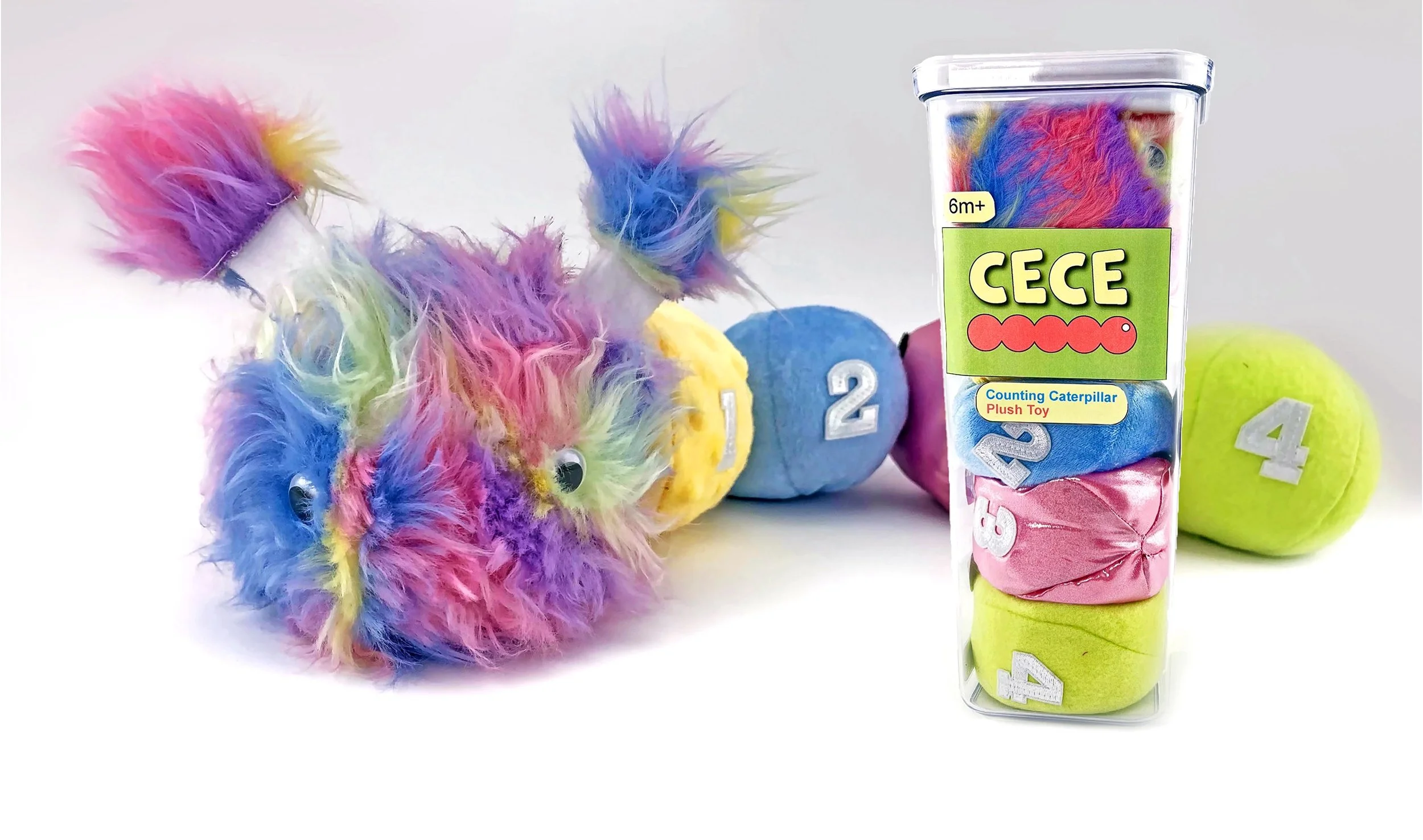nomad appA start-up process, from Problem to Pitch. I designed the Nomad app, created a business model, and pitched to investors.
2024
1. Problem selectionInitial Problem: Traveling is hard.
Target Customer: Our team decided to target young people, specifically young budget travelers, as our customer segment. This decision was driven by our own experiences and the recognition that travel presents numerous challenges for this demographic. We explored various aspects of travel, including packing, planning, and accommodation:
Second Problem Statement: "How might we streamline packing for travel?
2. research & customer developmentWe conducted in-depth research on young budget travelers, exploring their behaviors, preferences, and pain points. Our initial idea was to create a product that made travel packing easier, but through customer development, which included interviews, surveys, and focus groups, we realized that our initial direction wasn't quite right. Our customer’s main concern is affordability and convenience in all aspects of travel. This process of customer development helped us refine our problem statement and consider different angles for our startup.
During our research, we visited various startups and spoke to founders with diverse experiences. This exposure provided valuable insights into the startup ecosystem and helped us understand the range of motives behind starting a business. Some founders were driven by a genuine passion for solving problems, while others seemed more focused on profit. This experience inspired us to think about our own motivations and how we wanted to approach our startup.
3. Hypothesis Development and ValidationAfter gathering insights from customer development and research, we needed to develop a hypothesis for our solution. Our initial idea of streamlining travel packing didn't seem viable after our research, so we pivoted to a new concept. Our hypothesis was that our platform would encapsulate the essence of connectivity and personal recommendations, allowing users to find accommodations based on their friends' experiences..
This pivot was driven by customer feedback and the realization that finding reliable and comfortable accommodations was a significant challenge for young budget travelers. By focusing on personal recommendations and social connections, we believed our platform could offer a unique solution to this problem.
““I felt comfortable staying there because my sister had a good experience, I didn’t need to do any more research.””
4. MVPsWe also conducted practical tests to validate our concept. These are called MVPs. An MVP is a valuable aspect for a young startup, as it allows the entrepreneur to test their idea qucikly, and cheaply. So that’s exactly what we did. We created app mock-ups and posted in relevant Facebook groups to gauge interest in our idea. The response was encouraging, with 57 people expressing interest in hearing more about the proposed platform. Additionally, we recommended fake accommodations to friends to test their reaction—most were enthusiastic about the concept. This stage is crucial because it allows startups to gather feedback and refine their product before investing heavily in development.
5. business modelWith a clearer concept, we needed to define a business model that could generate revenue and sustain the startup. Our new business model involved partnering with larger companies like Airbnb and Booking.com to earn affiliate commissions on bookings through our platform, Nomad. Additionally, we planned to offer a premium subscription with exclusive features, providing an additional revenue stream. We created financial projections to understand how much of an investment we will need to get Nomad off the ground, and at what point we will be making that money back.
At this point, we encountered several challenges, including determining how to attract users to our platform and ensure that our partnerships with larger companies would be successful. We also had to consider the competitive landscape and identify unique selling points that would differentiate our startup from existing platforms.
6. testing and feedbackWe used our app mock-ups to collect user feedback and refine the product's design and functionality. This stage also involved pitching to potential investors. Our initial pitch to Creandum in Berlin highlighted the need for a robust customer base and a clear financial projection. This feedback allowed us to improve our pitch and focus on building a stronger business case.
Despite my initial nerves, our final investor pitch was successful. The preparation and practice paid off, and although we were not ready for a real investment, I felt as though we succeeded in securing valuable feedback. The experience taught me that pitching is an opportunity to showcase passion and potential. With the right preparation, pitching can transform from a daunting task to a chance to build connections and grow your startup.




